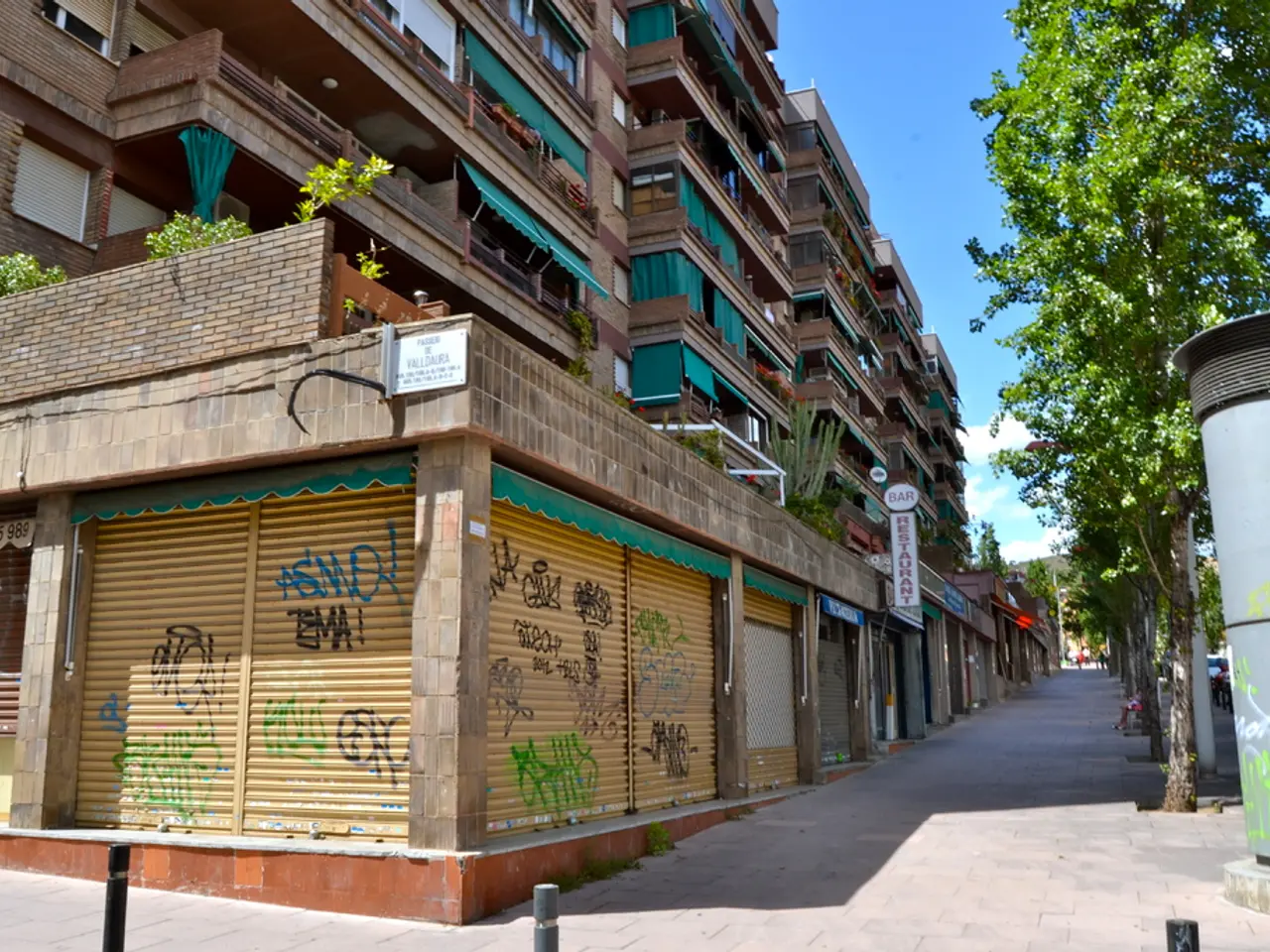Abandoned grand department stores in London are experiencing a revival.
London's most beloved department stores are undergoing a dramatic transformation, receiving a fresh breath of life even after suffering significant setbacks in brick-and-mortar retail. These prestigious shopping hubs, many a victim of the industry's seismic shifts, are making a comeback but don't expect the usual shop floors and racks. Instead, you'll find apartments, workspaces, gyms, and virtually every kind of eatery.
Foster + Partners' £1.1 billion revamp of Whiteleys, a famous shopping center on Bayswater's Queensway, exemplifies this trend. Upon completion, the site will boast 139 opulent residences and a 90-room Six Senses Hotel. Similarly, the Clapham Junction's Arding & Hobbs Building, an old Debenhams dating back to 1876, has been transformed into a mixed-use office space by Stiff + Trevillion. The metamorphosis of these buildings, and others in London, prove that department stores are an excellent choice for retrofitting and redevelopment.
This trend likely kicked off in 2017 when Squire & Partners gave new life to a dilapidated Edwardian department store in Brixton, turning it into a workspace and community hub known as the Department Store. General Projects' £20 million transformation of the Heal's building on Tottenham Court Road into the 'Manufactory' - a next-generation workspace campus - followed suit and was completed last March.
With the Whiteley Building and Arding & Hobbs joining the fray, it's clear that London's great department store reinvention isn't slowing down anytime soon. This trend also underscores the power of large-scale restoration over demolition, despite the intricate challenges involved in revamping old buildings.
Alex Michelin, co-founder of Finchatton, one of the developers leading the reimagined Whiteley, attests to the hurdles. 'This is a beautiful building with a 120-year-old façade. It's a landmark in London. But restoration isn't always a walk in the park. We couldn't find anyone to restore the old, lead windows. We had to get one guy to train others to do it in a modern way. It was challenging, but it was essential for sustainability and aesthetics.'
The Arding & Hobbs team faces similar challenges. In its new iteration, the building features workspaces, a rooftop terrace, an indoor escalator from its department store days, and a private member's club set to launch this month. Sascha Lewin, the project's chief executive, explains the careful positioning of uses based on the challenges posed by the structure.
'The building is absolutely stunning, but let's be honest, these structures can be a hassle to reposition in terms of uses,' Lewin notes. 'They are typically deep, lacking natural light, and the cost of conversion is high. That's why we've focused on developing for commercial rather than residential tenants. The building has been a headache, but it has breathtakingly beautiful historic features both indoors and out.'
As for what this approach to large-scale development might mean for London's historic buildings in general, there's a growing list of similar restorative projects popping up. Walworth Town Hall, a grand Victorian building in south London that sat vacant for over a decade following a 2010 fire, is now a thriving community, business, and cultural center.
'As a significant cultural and heritage asset in the city, it was crucial that a viable, long-term plan was in place to revive it,' says Jacob Loftus, founder, and CEO of General Projects, the developer behind the building's restoration. 'Though commercial viability might be a hurdle, the success of Heal's, Walworth Town Hall, and other similar projects demonstrate that such projects can thrive. With creativity, tenacity, and hard work, London's former department stores, town halls, and other historic treasures can, and must, be preserved for generations to come.'
Join our newsletter to receive daily doses of inspiration, escapism, and design stories from around the world!
[1] "London's historic department stores are being transformed into modern, multifunctional spaces": [link to article][2] "The Elephant: A low-carbon redevelopment of a Victorian department store": [link to article]
- "With a shift towards modern, multifunctional spaces, London's historic department stores are metamorphosing, integrating home-and-garden living in the form of opulent residences and mixed-use spaces."
- "The lifestyle transformation is evident in the revitalized department stores, as demonstrated by the incorporation of gyms, eateries, workspaces, and even private member's clubs into these historical buildings."




